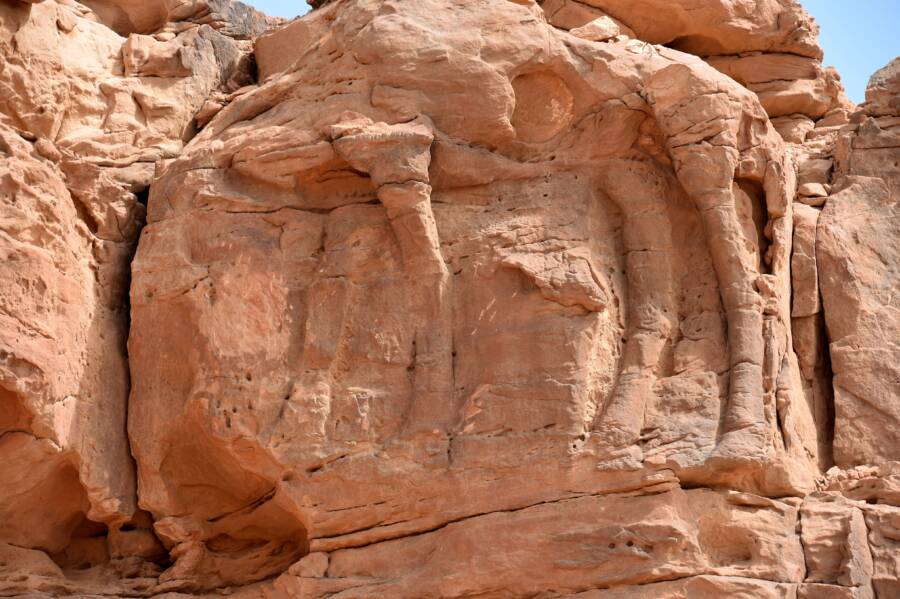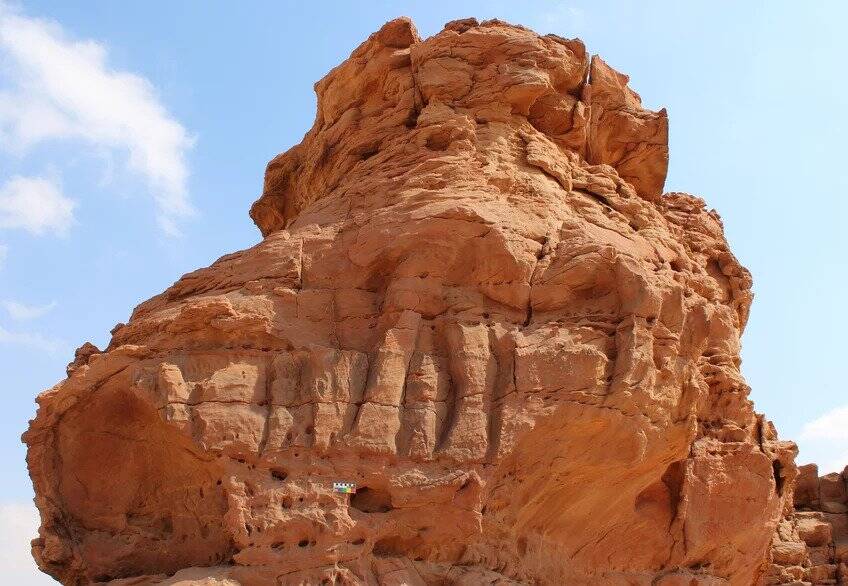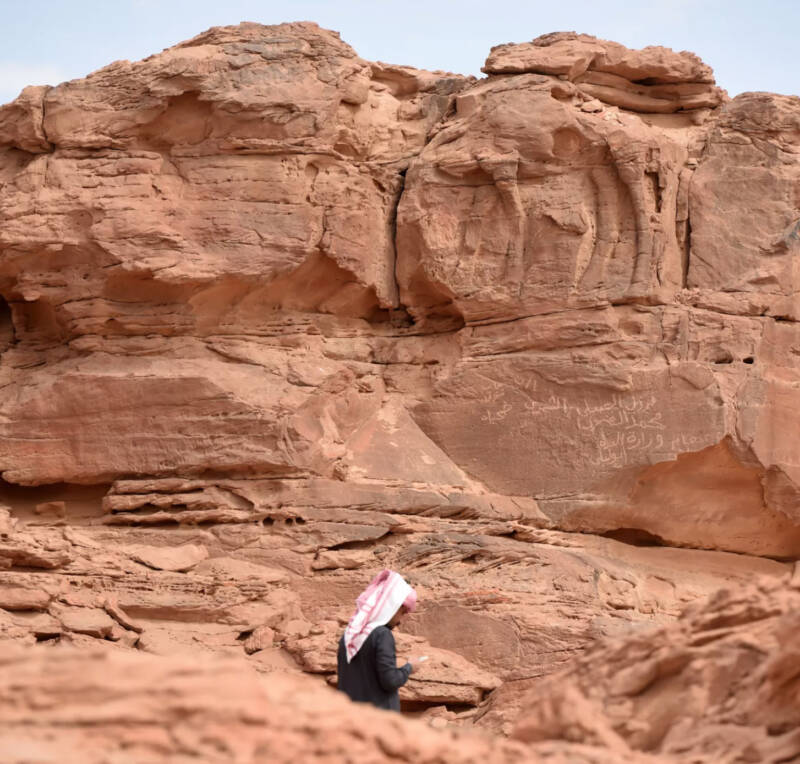If researchers' dating estimates are correct, these would be the oldest surviving three-dimensional animal reliefs of this size in the entire world.

FAYEZ NURELDINE/AFP via Getty ImageJust one of the many enormous camel carvings in Al Jawf, Saudi Arabia.
When researchers first uncovered the enormous stone camel carvings at Al Jawf, Saudi Arabia in 2018, they estimated that they were about 2,000 years old. Now, they’ve just discovered that they were off by about 6,000 years.
If researchers’ dating estimates are correct, these 8,000-year-old behemoths would be the oldest surviving three-dimensional animal reliefs of this size in the entire world.
“They are absolutely stunning and, bearing in mind we see them now in a heavily eroded state with many panels fallen, the original site must’ve been absolutely mind-blowing,” said Maria Guagnin, the lead author of the study and an archeologist with the Max Planck Institute for the Science of Human History.
When the camel carvings were first discovered, archeologists estimated their age based on similar finds nearby. But after conducting a chemical analysis and noting a lack of metal tool use, they determined that the reliefs were much, much older.
In fact, the sculptures — 21 of which have been identified so far — actually predate the Pyramids of Giza (which are about 4,500 years old) and Stonehenge (which is about 5,000 years old).
“We can now link the Camel Site to a period in prehistory when the pastoral populations of northern Arabia created rock art and built large stone structures called mustatil,” the study, which was published in the Journal of Archaeological Science: Reports, explained.
“The Camel Site is therefore part of a wider pattern of activity where groups frequently came together to establish and mark symbolic places.”

M. Guagnin & G. CharlouxThis carving shows an adult camel, and possibly a young equid to its left.
Thousands of years ago, archeologists suspect that ancient people launched a communal effort to create the camel carvings in a vast desert that was, at that time, still grasslands filled with lakes and trees.
First, they brought a stone called chert from nine miles away to make tools. Then, they spent ten to fifteen days on each carving.
Work would have been slow because the stone tools needed constant sharpening and replacement. And ancient artists would have needed some kind of scaffolding to reach the highest parts of the rock.
“Neolithic communities repeatedly returned to the Camel Site, meaning its symbolism and function was maintained over many generations,” explained Guagnin.
Still, the question remains — why? What purpose did the camel carvings serve to the people who carved them thousands of years ago and why did nomadic communities band together to build them in the first place? Archeologists have some theories.
“Communities of hunters and herders tend to be very dispersed and mobile, and it’s important for them to meet at regular times during the year, to exchange information, spouses, and so on,” explained Guagnin.
She noted that nomadic tribes created stone edifices called mustatils across northwestern Arabia, but it’s unclear if they have a connection to the camel carvings.
“So whatever the symbolism of the sculptures, this may have been a place to bring the whole community together.”

FAYEZ NURELDINE/AFP via Getty ImagesThough some have been damaged by erosion and vandalism, about a dozen of these camel reliefs remain.
The sculptures themselves offer some clues, too. At the time of their creation, humans had domesticated cattle, sheep, and goats, but camels ran wild. Plus, the sculptures seem to depict camels with round bellies and bulging necklines, suggesting a depiction of mating season.
Given these symbols, it seems highly likely that the camel carvings originally represented fertility, or perhaps marked a time of year when nomadic people gathered.
For now, however, archaeologists are concerned not only with the camel carvings’ origins, but with their future as well. The passage of time has started to take its toll and preservation efforts are now needed.
“Time is running out on the preservation of the Camel Site and on the potential identification of other relief sites as damage will increase and more reliefs will be lost to erosion with each passing year,” Guagnin said.
Discoveries of this magnitude don’t come around often, and preserving them is paramount. Hopefully, in the case of the Al Jawf camels, researchers found them just in time.
After reading about the camel carvings in Saudi Arabia, learn how a Scottish archeology student stumbled upon the country’s oldest animal carvings in Dunchraigaig Cairn. Or, read about the camel that bit off its owner’s head after being left in the sun all day.





